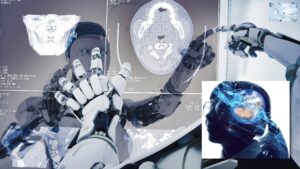People have long expressed concerns about the ethical implications of artificial intelligence (AI). They believe that intelligence legislation should be implemented. The idea behind this is to create more guidelines and protocols to use when dealing with AI technologies. As a demand of time, the White House has now made the blueprint for an AI Bill of Rights public.
What it does is give a comprehensive review of the issues associated with the ethical use of artificial intelligence (AI). It does not, however, offer any guidelines for the executive and legislative branches of our system. Instead of an introduction that is similar to ones that have already been published elsewhere, the White House would rather produce a legislative blueprint.
The blueprint is very brief and clearly written. An overview of the five guiding principles that the authors believe are essential for societal defenses against the misuse of AI is presented in the first few pages. These are the five guiding principles:
- Safe and effective systems
- Algorithmic discrimination protection
- Data privacy
- Notice and explanation
Each of the factors is given a very concise, high-level overview in the introductory sections. The rest of the document has offered more in-depth justifications and examples. But, the Technical Companion seems to be incorrect name for the longer sections. Since they are not technical, folks who are interested in learning more about this problem shouldn’t be put off by reading the expanded information.
That generality is the issue. For example, in the section about safe and effective systems, a sentence reads, “You should be protected from inappropriate or irrelevant data use in the design, development, and deployment of automated systems, and from the compounded harm of its reuse.” Of course we should. Stakeholders expect the government to provide stronger guidance and introduce laws, although independent organizations such as the Organization for Economic Cooperation and Development (OECD) and trade groups are appropriate for making such vague remarks.
A few references are made to executive orders, the Privacy Act of 1974 (1974? ), and other laws of a similar nature. What modifications do we need to make to the laws to mirror the widespread use of computing today and the underlying data use? For instance, the paper mentions Executive Order 13960, which “requires that certain federal agencies adhere to nine principles when designing, developing, acquiring, or using AI for purposes other than national security or defense.” Why only “certain federal agencies”?
As AI is growing abundant in quantity and smarter in quality, the complexity of these issues is really increasing. The author, therefore, offers a request to the executive and legislative branches to create a more specific Artificial Intelligence Bill of Rights.
The White House is the official executive office of the president of the United States. Officially, it is the oldest continuously operating agency in the federal government and the only office of a president under the direct control of Article Two of the Constitution. The office is based at the White House Complex in Washington, D.C.
There are already numerous white papers and articles outlining concepts for the ethical use of AI. Our governments – federal, state, and local – must take action. The published blueprint provides a good description of the problem, but federal policy should not be applied in that way. This is a topic that ought to be capable of unifying the increasingly divided political spectrum. The White House has to cooperate more extensively with Congress to develop specific laws that would carry out the plan.
As every invention, development, or social behavior needs to remain under an appropriate law, the White House should not refrain from taking necessary actions in order to ensure the world that AI won’t be able to cause more harm than good.
It’s a good start!
- AI-Powered PCs: Overhyped Trend or Emerging Reality? - August 21, 2024
- Princeton’s AI revolutionizes fusion reactor performance - August 7, 2024
- Large language models could revolutionize finance sector within two years - March 27, 2024



